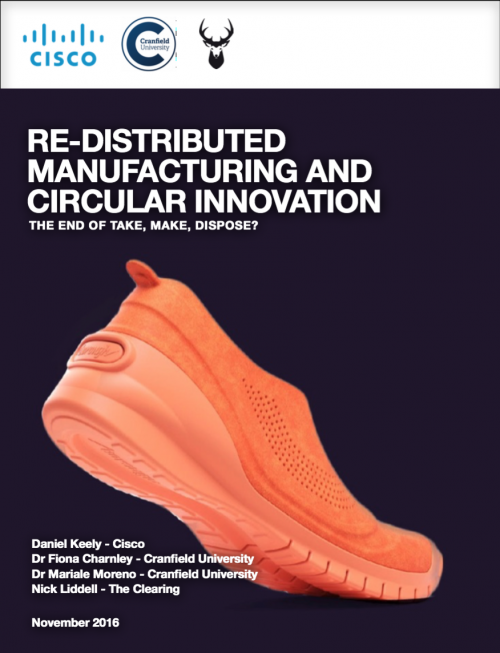
Re-distributed Manufacturing – the End of Take, Make, Dispose? Part 2
2 min read
In my previous blog, we looked at some the changes to society that are already underway, the challenges and opportunities they present to manufacturers and the real need for industry to look to new models to avoid being disrupted by a new player. I referenced a project Cisco’s industrial innovation team recently collaborated on with Cranfield University and The Clearing that focused on combining big data and digital technology to drive a new, circular model for production through re-distributed manufacturing.
In this blog, we’ll take a closer look at both circular innovation and re-distributed manufacturing and how in combination they could help consumer goods manufacturers in particular to respond to rapidly changing consumer and market dynamics.
Circular Innovation
The circular economy is the term used to describe sustainable production – a direct contrast to the linear or ‘take, make, dispose’ economy we are familiar with today. Circular innovation involves designing sustainability in and waste out of the value chain, for example by incorporating modularity, re-use and repair into the product lifecycle, or diverting waste streams as inputs into other supply chains.
Re-distributed manufacturing (RdM)
RdM is the term used to describe the transformational shift from centralised to decentralised (usually smaller-scale) manufacturing, powered by digital technologies. At its core is a production system that can rapidly and flexibly deliver partly or fully customised products on-demand.
Among other benefits, notably security, the flexibility and speed to market made possible by RdM encourages circular innovation in the following ways:
- Almost unlimited opportunities for personalisation in product design and assembly, from choosing the colour, finish or provenance of materials used right through to precision fitting to ensure an exact fit.
- Production at a micro-local level (for example via a mobile production unit), potentially solving thorny logistical issues where products need to be transported under specific conditions difficult to guarantee or prohibitively expensive.
- Variable volumes. Due to digital production techniques and on-shore production location, RdM offers the ability to scale up or down in line with market conditions, while still maintaining acceptable margins.
In the next blog in the series, I’ll explore why the new model is important and look in detail at how it differs from how things are done in manufacturing now.
- Catch the first blog in this series, which covers the changes that are underway and their impact on industry
- Download the ‘Re-distributed Manufacturing – the End of Take, Make, Dispose?‘ white paper
- Read more about the ‘Shoe Lab‘ collaboration between Cisco, Cranfield University and The Clearing
- See how Cisco is working with manufacturers to drive digital transformation
